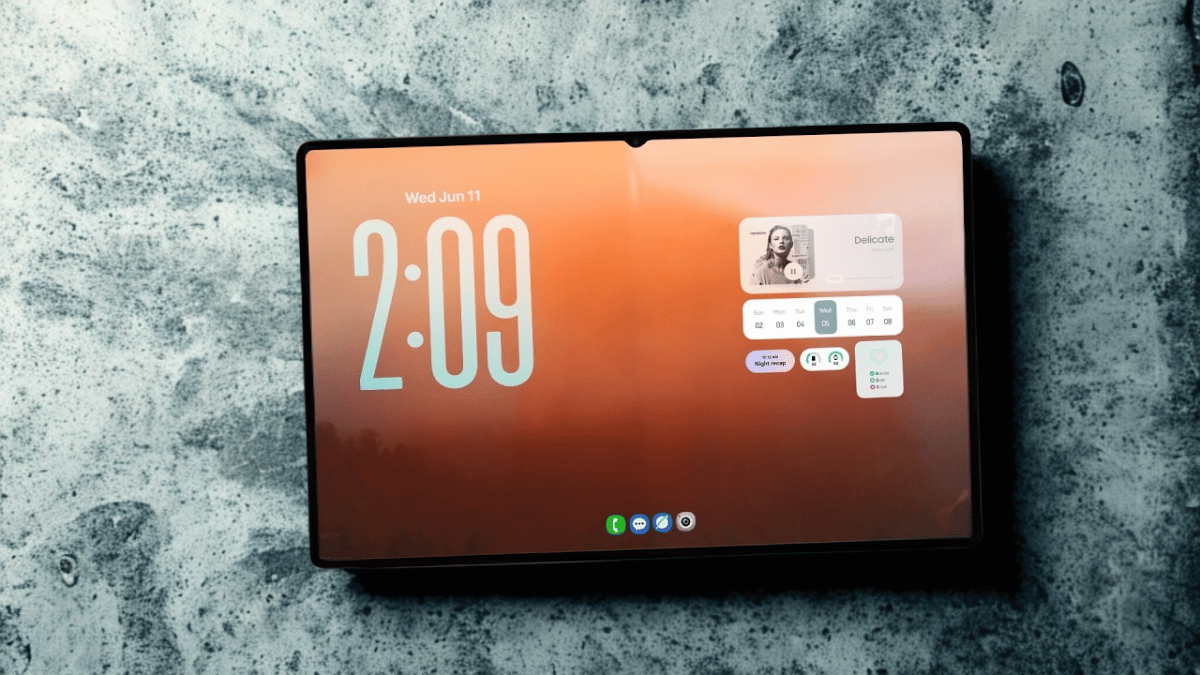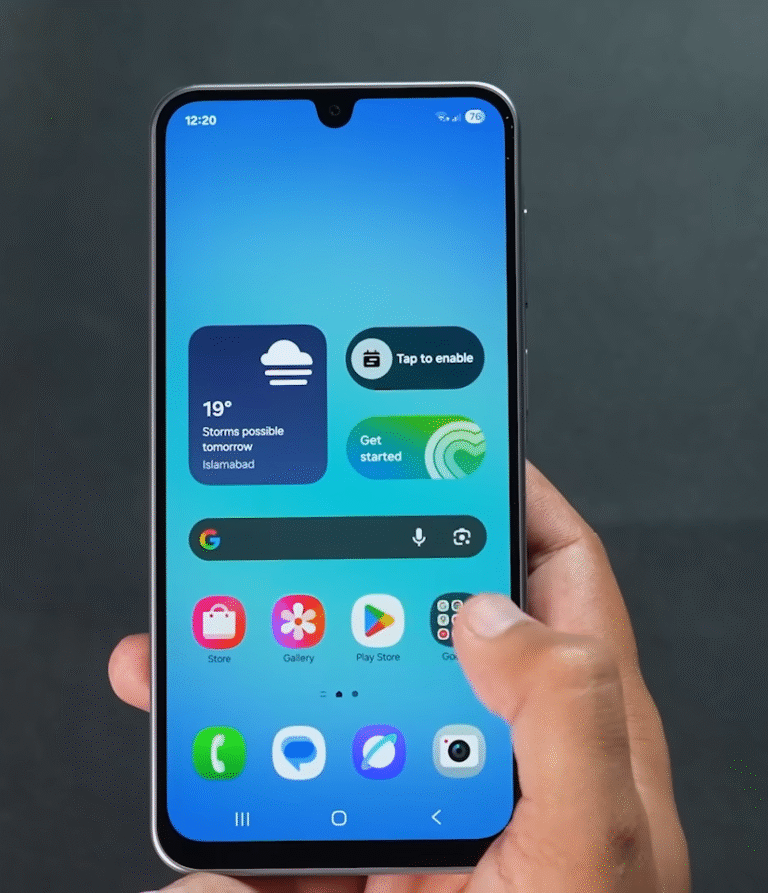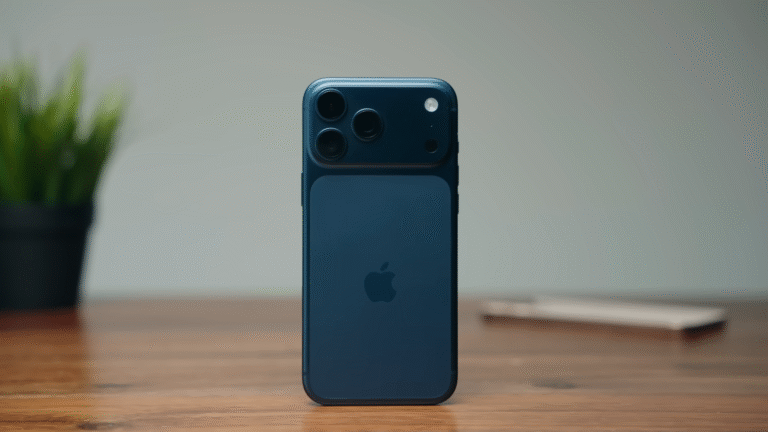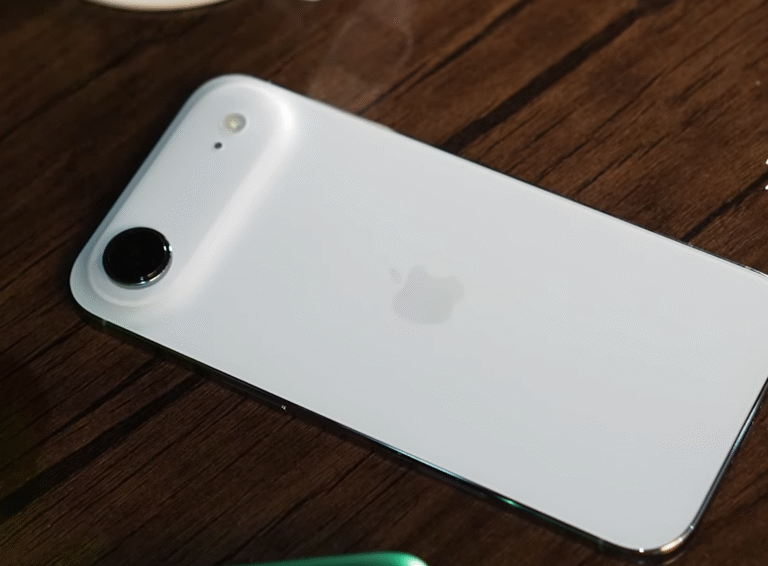
Samsung’s upcoming Galaxy Tab S11 Ultra isn’t a mystery anymore. Thanks to leaked official videos and marketing material, we now know not just the spec sheet, but also the design tweaks, the S Pen changes, and some surprising shifts in philosophy. And while most headlines will simply repeat “brighter screen, faster chip, same price,” there are hidden details here that are more telling about where Samsung is taking its flagship tablet line.
Slimmer, Lighter, Yet More Powerful
The first thing the videos confirm is how much effort Samsung has put into the design. The Tab S11 Ultra trims down its body by 0.3mm compared to its predecessor, and it also drops 26 grams in weight—all while housing a 400mAh larger battery. Those numbers might sound trivial at first, but if you’ve ever used a massive Ultra tablet for reading, sketching, or long productivity sessions, you know even small reductions in weight add up. This change makes the S11 Ultra feel less like a portable monitor and more like an actual tablet you can hold comfortably for hours.
Google Gemini on a Tablet
The second video highlight is where things get interesting. Google Gemini is shown running directly on the S11 Ultra, analyzing whatever is on screen via voice commands. That’s not just a neat demo—it signals how Samsung is willing to let Google’s AI run natively on its hardware instead of forcing its own ecosystem everywhere. If Gemini works seamlessly with multitasking and DeX mode, this could make the Tab S11 Ultra one of the first true AI-first tablets, not just a “bigger phone.”
Wireless DeX Finally Feels Complete
Another subtle upgrade is DeX mode outputting to an external monitor wirelessly. Samsung has been promising a desktop-like experience for years, but the cable requirement often made it clunky. With wireless dual-display support, the Tab S11 Ultra inches closer to the dream of a tablet that really can double as a laptop replacement. Imagine sketching with the S Pen on the tablet while running presentations or apps on a second screen—all without a dock.
Brightness That Finally Competes With iPad Pro
Samsung has finally addressed one of the long-standing complaints about its tablets: brightness. The Tab S11 Ultra now reaches 1000 nits outdoors and 1600 nits in HDR, up from the S10 Ultra’s 930 nits. That bump makes the display usable in direct sunlight and, more importantly, puts it on par with the iPad Pro. For years, Apple had the brightness crown, and now Samsung can finally compete in real-world visibility, not just on paper contrast ratios.
The S Pen Controversy
Here’s where Samsung risks losing loyal users. The new S Pen has been redesigned with a hexagonal, pencil-like body and sharper tip. It looks stylish, but there’s a hidden cost: functionality. The reason previous Galaxy Tabs had a plastic strip on the back was to allow wireless charging of the Bluetooth-enabled S Pen. With the S11 Ultra’s full aluminum body, that strip is gone—and so is wireless charging.
The result? No more Bluetooth features like remote camera controls or air gestures. For casual note-takers, this may not matter. But for the group that actually used the S Pen as a presentation remote or creative tool, this feels like a downgrade. And it stings even more because Samsung continues to market the tablet as an “ultimate productivity device.” Removing features while raising the productivity flag sends mixed signals.
Performance: Fast but Compromised
On paper, the S11 Ultra is no slouch. Samsung claims 24% faster CPU, 27% faster GPU, and 33% faster NPU performance compared to last year. Geekbench numbers back this up, with around 2500 single-core and 8700 multi-core scores. Solid—but not leading. The Snapdragon 8 Elite powering the Galaxy S25 Ultra easily outpaces it with 3000/9800 scores.
And here’s the bigger story: Samsung opted for MediaTek in a $1200 premium tablet. Yes, Snapdragon prices are climbing, but customers paying this much expect the absolute best silicon available. It’s a compromise that risks making the S11 Ultra look like a premium device with a mid-tier engine.
Other Tweaks That Matter
Samsung has cleaned up the design slightly—no more camera rings, and the magnetic pins for the keyboard have been repositioned. The tablet will be offered in just two colors: Grey and Silver. Interestingly, despite Samsung’s ongoing trend of cutting ports and features, the microSD card slot survives. For power users storing large video files or games, that’s a relief.
Pricing stays the same as last year, which is rare good news in a market where everything seems to creep upward.
What’s Next?
There’s also buzz that Samsung could tease its first trifold phone at the September 4th event alongside the S11 Ultra and S25 FE. While foldables are no longer shocking, a true trifold that opens into a full tablet would signal the next big leap in mobile hardware. If Samsung shows even a glimpse, it could steal the spotlight from the Tab S11 Ultra itself.



